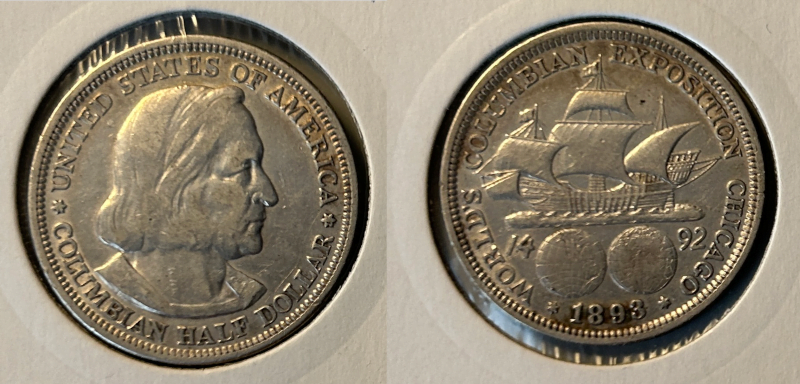I enjoy collecting early commemorative U.S. coins (1892-1954) and I’ve written about some of them in the past. I enjoy these coins due to the level of detail on them and the beautiful, classical designs that give them a real vintage feel. The Bay Bridge, California Diamond Jubilee and Texas commemoratives are some of the most aesthetically pleasing coins I’ve ever seen.
Plus, some of these coins have great stories behind them.
For instance, the Alabama coin marked the first time a woman got credit for designing it — in this case, sculptor Laura Gardin Fraser. The obverse features William Bibb, Alabama’s first governor, and Thomas Kilby, governor at the time of the centennial. Kilby’s depiction marked the first time a living individual was featured on a U.S. Mint issued coin — something that’s happened a few times since.
Or how the Huguenot-Walloon commemorative marking the 300th anniversary of religious groups from France and Belgium landing in what is now New York generated controversy for seemingly violating the Establishment Clause of the First Amendment. It was also one of the last coins designed by famed Mint engraver George T. Morgan (the guy who gave us the Morgan Dollar, among others).
Or the controversial Oregon Trail Memorial Half Dollar, which was issued from 1926-1939, making it the longest-running commemorative of that era. Brought about thanks to the energies of one man, Ezra Meeker, an alumnus of the Trail who spent much of his life publicizing and memorializing it, the coin was an early hit but its popularity soon waned. Despite a large number of unsold commemorative halves, Meeker’s Oregon Trail Memorial Association used its political clout and knowhow to get the Mint to issue even more coins. As such, these are among the most affordable early modern commemoratives on the market today.
Or the book-ends of the early modern commemorative program: the Columbian Exposition (1892-93) and George Washington Carver/Booker T. Washington (1951-54) half dollars. Like the Oregon Trail coin (and a lot of others from this era), they were over-minted and under-purchased, meaning today’s collectors can easily obtain well-struck/well-preserved specimens for a decent price. They’re great as collection starters, too. The Columbian Expo was the first early commemorative I ever bought.
On the other hand, there are plenty of commemoratives from that era that are out of my price range (hence, not in the above slideshow), like the Hawaii Sesquicentennial (only 10,000 were struck), the Panama-Pacific Exposition or the Fort Vancouver Centennial, which regularly go for thousands of dollars. Even a coin that completely flopped, like the Cincinnati Music Center/Stephen Foster commemorative (Foster wrote most of his best-known songs in Pittsburgh), goes for a few hundred now. Hard times come again no more, indeed…











